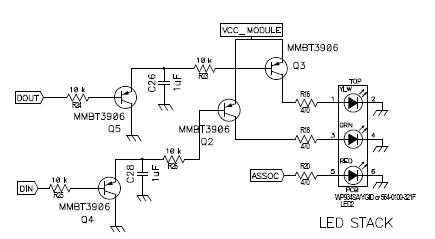philipdj
Newbie level 3

rs232 led
Hi,
I am using the XBIB-R-DEV board for a project.
https://ftp1.digi.com/support/images/XBIB-R-dev schematic.pdf .
I referred to the schematics because I'm doing a custom design for a similar board. I have a doubt regarding the LED status indicator circuit used there. Can anyone please explain as to how it works? There were some concerns raised by some peers regarding it's proper functionality or whether it actually works.

This is the circuitry. I'd really appreciate any help. Thanks.
Hi,
I am using the XBIB-R-DEV board for a project.
https://ftp1.digi.com/support/images/XBIB-R-dev schematic.pdf .
I referred to the schematics because I'm doing a custom design for a similar board. I have a doubt regarding the LED status indicator circuit used there. Can anyone please explain as to how it works? There were some concerns raised by some peers regarding it's proper functionality or whether it actually works.

This is the circuitry. I'd really appreciate any help. Thanks.
